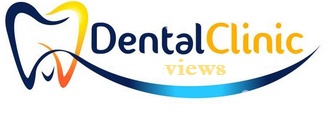Can My Child Undergo PRP Therapy for Pain Management?
3 min read
Platelet-rich plasma (PRP) therapy is an experimental treatment that currently has a variety of applications, such as pain management and tissue regeneration. It has already been used in the treatment of sensorineural hearing loss in children as young as 10 years old with a 99% improvement rate in hearing levels.
As a general rule, children can undergo PRP therapy for pain management. The therapy is also being investigated in the treatment of pediatric sports injuries and other musculoskeletal pathologies and requires further study.
Watch here as 14-year-old Ansley shares his experience with PRP therapy to help him heal from a stress fracture that occurred while he was playing tennis.
Who Is Not Suitable for PRP?
You would not be suitable for PRP therapy if you have recently been diagnosed with any one of these conditions:
- A rash at the donor or receptor site
- Bone cancer
- Critical thrombocytopenia
- Enterococcus, pseudomonas, or klebsiella infections
- Fevers or illness
- Hematopoietic cancer
- Hemodynamic instability
- Hypofibrinogenemia
- Platelet dysfunction syndromes
In addition, your primary care physician may recommend caution if you are prescribed any of the following:
- anti-inflammatory medications
- corticosteroid injection at the treatment site within 14 days before treatment
- systemic corticosteroid medications.
Can PRP Be Harmful?
PRP therapy is not harmful, as long as the treatment is administered by experienced physicians like the team at Lone Star Pain Medicine in Weatherford, Texas. Since the patient’s own blood is used to synthesize the regenerative plasma, PRP therapy is an autologous treatment which carries fewer risks than transplant-based therapies (for example, rejection).
How Does PRP Therapy Work?
PRP therapy works in three basic steps:
- The retrieval of blood tissue from the patient being treated.
- The separation of the blood the patient has donated into platelet-rich plasma, leukocytes, and red blood cells.
- The injection of the platelet-rich plasma into the injured or painful area.
Most patients experience no side effects and simply require a period of rest following treatment. When it comes to adults, most are up and out and going about their daily work in an hour of two following the procedure.
Nevertheless, after a follow-up visit, your treating physician will confirm that your child can resume their regular activities.
What Are the Side Effects of PRP?
A documented side effect of PRP therapy is pain at the injection site. Not every patient will experience pain; however, this depends on the treatment site, and the type of PRP treatment administered:
- Leukocyte poor PRP (LP-PRP)
- Leukocyte rich PRP (LR-PRP).
Both LP-PRP and LR-PRP therapies can increase inflammation at the treatment site, which leads to a temporary acute pain response.
Can Your Body Reject PRP?
Since the treatment is based on your own blood tissue, your body will not reject the plasma.
However, it is essential that you confirm with your pain management physician whether the therapy makes use of any bovine product, which your body may treat as a foreign substance.
Final Thoughts
There are numerous success stories that bring hope to young athletes and their parents. However, as Dr Thomas Best urges, be cautious and first focus on relieving the stress that results from overuse of a set of muscles and bones, as is often the case with sports injuries.
You should always consult your trusted physician when deciding whether to allow your child to undergo platelet-rich plasma therapy for pain relief or tissue regeneration.
While PRP therapy is available in a wide variety of configurations, this cutting-edge medical treatment requires much more in-depth study, research, and standardization.







